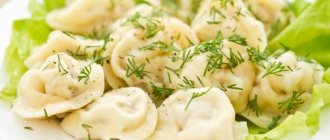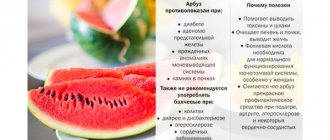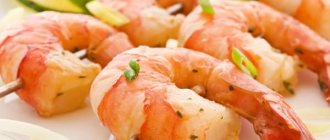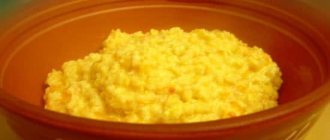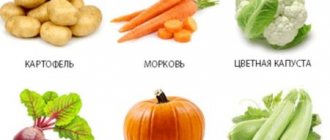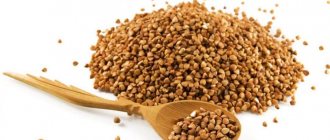Fish should be included in the diet of any person, both adults and children. Today, many delicious, satisfying and healthy dishes are prepared from it. The question naturally arises as to whether it is possible for patients with an inflamed pancreas to take it as food, or, in this case, it is better to abstain from it. To the question of whether you can eat fish for pancreatitis or not, the answer is yes, but it is worth considering several important points.
What are the benefits of fish for the human body?
We need to figure out why doctors advise all people to include its various varieties as much as possible in their daily diet.
- Fatty marine fish contain omega three fatty acids, which help maintain normal immunity, reduce cholesterol levels in the blood, and trigger metabolic processes.
- This is a fairly light product that is well absorbed by the human body.
- Such dishes contain large quantities of vitamins A, E and D. Of course, they are also found in other foods, but not in such large quantities.
- If you regularly eat its sea varieties, your body will never experience a deficiency of phosphorus, iron, selenium and iodine.
Attention! Many people have heard about the benefits of fish oil. However, patients with a diseased pancreas should not take it categorically, as it will have an unpleasant effect on it. The fact is that for the complete breakdown of fish oil, exactly those enzymes are required that the pancreas secretes, and in case of illness, the organ does not work at full capacity.
Delicious fish recipes with photos
Fish is a universal product; it can not only be boiled and baked, but also combined with vegetables, and also prepared into delicate casseroles, soufflés, and quenelles. Cooking has many recipes involving fish, with their help you can prepare delicious and harmless dishes that will delight not only you, but also your loved ones.
Fish soufflé
Such a dish is acceptable already a week after an exacerbation of the disease. It turns out tender and quite tasty.
Required ingredients:
- 350 g fresh pike perch fillet;
- 2 egg whites;
- 150 ml low-fat sour cream;
- Salt.
Prepare the fish: rinse it thoroughly, cut off the fins and other excess parts, remove the bones, and then grind the meat using a blender. After whipping the egg whites, add them to the fish mixture, add sour cream and a pinch of salt. Stir until a homogeneous mass is obtained.
At the next stage of preparation, you need to take cling film, wrap the soufflé base in it, and twist the edges. The resulting block must be additionally wrapped in foil, after which it must be placed on a baking sheet. It is recommended to place a container of water under it - this is necessary to create steam. After 20-30 minutes, the dish can be considered ready; it can be eaten both warm and cold.
Boiled fish
One of the simplest ways to prepare fish is to boil it. In this form, the product can be consumed 7 days after acute symptoms have resolved.
We will need:
- 500-700 g of any dietary fish;
- 20-30 g green onions;
- 5 g ginger root;
- Salt.
Having washed and cleaned the fish from the bones, we proceed to chopping the onion and ginger - the finer we chop these products, the better. Next, pour a liter of water into the pan and put it on the fire, after it starts boiling, pour the chopped vegetables into the container. After a few minutes, put the fish in there; it needs to cook for 15-20 minutes.
Steamed fish cutlets
This is perhaps the most common dish using fish. Let's take:
- 500 g of any dietary fish;
- 2 eggs;
- 10 g butter;
- 30 g semolina;
- Onion;
- A pinch of salt.
Grind the onion, butter and fish using a meat grinder and salt the resulting mass. In a separate container, combine semolina and eggs, then mix this liquid with minced fish and form cutlets. The next stage is preparing a multicooker or double boiler: pour water into the bowl, grease the mold with butter, select the “steaming” mode and set the timer for 20 minutes (the time indicated does not include boiling water). After this time, the dish is considered ready.
Fish quenelles
In taste and appearance, quenelles resemble cutlets, however, the list of ingredients required for their preparation is somewhat different:
- 300 g fish fillet;
- 50 g white bread;
- 1 egg and 1 onion;
- 50 ml milk;
- Salt.
The first step is to grind the fillet and onion through a meat grinder, and then combine the resulting minced meat with bread pulp soaked in milk. It is recommended to additionally wipe the fish mass with gauze. Add the beaten egg and salt, mix thoroughly. Further. Carefully lower the formed fish balls into boiling water. You need to cook them over medium heat for 20 minutes.
Fish balls with rice
This option is perfect not only for lunch, but also for dinner. Components we need:
- 350 g cod fillet;
- 150 g rice;
- 1 egg;
- Dill;
- Salt.
First, prepare the minced meat according to the above scheme. Salt it and combine it with rice (it must be boiled first). Beat the egg into the resulting mass, add finely chopped dill to it, mix thoroughly. Having formed balls from the minced fish, place them in a deep mold and fill it with water so that the liquid covers the meatballs by 3 cm. Cook the dish in the oven for 35-40 minutes.
Baked pollock with milk sauce
You will need:
- 400 g fish fillet (hake or pollock);
- 20 g flour;
- 250 ml low-fat milk;
- 30-50 g cheese;
- Salt.
Place the fish, cut into equal pieces, into a baking dish and add salt. Next, you should start preparing the sauce. To do this, pour the flour into the frying pan - its surface should be dry, no vegetable oil is required. Fry the flour until light yellow and pour it into an enamel container. Pour milk into it and then put it on fire. All that is necessary is to wait until it boils, however, you cannot leave the pan: the sauce must be stirred all the time so that lumps do not form in it. We cover the fish with gravy, grate cheese on top, after which the form with the product can be safely placed in the oven. The time required for cooking is 30-35 minutes.
Fish baked with zucchini
To get a tasty and healthy dish, in addition to 500 g of dietary fish, we will need:
- 2 small zucchini;
- 300 ml sour cream;
- 50 g hard cheese;
- 20 g butter;
- Salt.
Salt the fish fillet cut into slices and set aside. Next, you need to deal with the zucchini: they should be washed, peeled and seeded, and the middle pulp removed. Having cut the vegetables into small cubes, we move them to the bottom of the mold, which must first be greased with melted butter. Salt the zucchini and place the fish on top of it; at the very end, fill the dish with sour cream and add grated cheese. The fish is baked over medium heat for no more than 40 minutes.
Other vegetables, such as carrots and onions or broccoli, are also suitable as an alternative to zucchini.
Stewed fish
Stewing is another gentle way to prepare a dietary dish.
Let's take:
- 500 g lean fish;
- 1 onion and 1 carrot;
- 400-450 ml low-fat milk;
- A pinch of salt.
The onion is cut into half rings, the carrots are chopped using a grater. Next, put the vegetables in a deep container, place salted slices of fish fillet on top and fill the contents with milk. In this form, the dish must be simmered until cooked - about 15-20 minutes.
Fish is an essential product that must be present in the diet of a person suffering from pancreatitis. Nutritionists recommend consuming it boiled, baked or stewed at least 3 times a week. However, it is worth remembering that only low-fat or moderately fatty varieties of fish can have a beneficial effect on the body and not cause harm to it.
Contraindications to eating fish for inflammation of the pancreas
In addition to the inflammation itself, the patient may experience other health problems.
- Increased sensitivity of the body to fish oil.
- Feeling unwell after consuming fish oil and not being accepted by the body.
- Poor blood clotting.
- Kidney problems that have become chronic.
- Cholecystitis in acute manifestations.
- Hemophilia.
- Significant disruptions in the functioning of the thyroid gland.
- High pressure.
- Just had surgery.
- If a pregnant woman is sick with pancreatitis, then fish is kept to a minimum in order to eliminate stomach upsets, which will be expressed in loose stools.
- Stones in the kidneys and gall bladder.
How to choose the right fish for a patient with pancreatitis?
Before you go to the store or market, you need to clearly understand that this product is divided into 3 varieties - skinny (low fat, lean), medium fat and fatty. So, if there is inflammation of the pancreas in any form, fatty fish is prohibited. If you ignore this warning, you may experience the following problems:
- nausea to the point of vomiting,
- severe pain in the abdominal area,
- diarrhea.
If you eat fatty foods on a regular basis, this can provoke an extraordinary attack of the disease.
What kind of fish can you eat if you have inflammation of the pancreas?
For people with a diseased pancreas, there are the following types of fish:
- Marine varieties have the lowest fat content; this is what you can use for pancreatitis. It includes: navaga, haddock, blue whiting, saury, pollock, etc.
- River fish is a little fattier, but its consumption is still allowed. Such fish include: pike, crucian carp, roach, carp, etc.
- Even more fatty, but still acceptable for use: rudd, sea bass, halibut, carp, trout, hake, low-fat herring, they can also be eaten with pancreatitis.
Of course, fat content is a relative indicator. The fact is that the fat content of fish depends on its age, on the time of year in which it was caught, and on spawning. But in any case, in case of inflammation of the pancreas, it is worth focusing on the above varieties.
What fish can you eat if you have pancreatitis and how to cook it correctly?
Pancreatitis is a dangerous disease associated with an inflammatory process in the pancreas.
In the treatment of this disease, doctors rely not only on medications and surgical capabilities, although sometimes they cannot be avoided, but also on the correct therapeutic diet, which will help a person maintain the functioning of his pancreas and avoid relapses of the disease. Is fish acceptable in such a diet? This article will tell you.
To understand whether a particular product is suitable for diagnosed pancreatitis, you should know what processes the disease is associated with.
With pancreatitis, the pancreas is inflamed, and the enzymes it produces are not released into the duodenum, where they are needed for proper digestion, but become active right inside the gland. In fact, she begins to digest herself.
In the acute form of the disease, treatment is carried out exclusively in a medical hospital. A chronic disease requires constant adherence to a diet to prevent repeated exacerbations.
For those suffering from pancreatitis, a special therapeutic diet has been developed - the Pevzner diet No. 5.
It implies several important rules:
- a slight decrease in protein foods - to about 80 grams per day, a decrease in carbohydrates to 400 grams;
- the amount of fatty foods should be reduced to 80-90 grams per day;
- salt is present in an amount of no more than 10 grams per day.
A patient with pancreatitis should gain no more than 2400 - 2800 kcal . As you can see, the life of a patient with pancreatic inflammation changes dramatically. Fish is quite acceptable in the Pevzner diet, but its use by patients must meet a number of strict requirements.
When used correctly, fish will help you get the right amount of protein; it is devoid of carbohydrates; many substances in its composition have a beneficial effect on cholesterol levels, blood sugar, and even the production of digestive enzymes. The protein in fish is quickly digested and well absorbed by the human body. And at the same time, fish can disrupt digestion, become a serious burden for a sick pancreas, and lead to exacerbation.
To prevent this from happening, it is important to know which types of fish are allowed and which are prohibited, how to properly prepare a fish dish so that it can be safely included in a medical diet.
Understanding correctly the requirements of a therapeutic diet in terms of reducing fats and carbohydrates, in case of pancreatitis you need to choose fish that belongs to the low-fat category - preferably no more than 3% fat in the composition of the BJU. Thus, the following marine inhabitants are included in the list of permitted:
- cod;
- haddock;
- navaga;
- whiting;
- pollock;
- flounder;
- silver hake.
If you have a great love for river fish, then, taking into account the required fat content, you should choose one of these varieties:
These types of fish can be included in the diet often; there are no significant restrictions when prepared correctly.
Among varieties with moderate fat content, which are occasionally allowed in the diet, you should choose:
- tuna;
- chum salmon;
- catfish;
- trout;
- carp;
- river perch.
You should not think that fish with a low percentage of fat content is a product that is less beneficial for the human body. In terms of amino acid composition, low-fat varieties are not much inferior to fatty varieties, and amino acids are one of the greatest values of fish dishes.
Fish caviar is a tasty product that is a real storehouse of vitamins and minerals, proteins and fats valuable for the human body.
And often doctors really recommend it to sick adults and children for a faster recovery from illness. However, pancreatitis has its own nuances.
For example, red caviar is prohibited for patients during periods of exacerbation and during periods of fragile and unstable remission.
The fact is that caviar contains a lot of salt, high cholesterol levels, and that is why the product is considered dangerous.
If the remission is long-term and stable, the doctor, at his discretion, may allow the patient a little caviar - usually no more than 1 gram.
Moreover, the delicacy should be eaten exclusively on a full stomach and in a strictly defined quantity, which will not create an enzyme load.
Red fish in any form is considered undesirable for those suffering from pancreatitis. It is also undesirable to consume all fatty fish. This includes herring and mackerel.
After eating fatty fish, the patient may experience a feeling of nausea, heaviness in the epigastric region, vomiting, and diarrhea with impurities of fatty mucus.
This situation is regarded as an exacerbation of the disease, and the patient needs medical care in a hospital setting.
Not only the fat content of the product is important, but also the method of its preparation. Dried, salted, smoked and fried fish are strictly
This food is quite aggressive, high in calories, saturated with fat; to digest it, the body needs more of the appropriate enzymes, which irritates the pancreas and invariably leads to an exacerbation of the disease.
Even during periods of stable remission, all canned fish are strictly prohibited. For their preparation, large quantities of preservatives, additives, and sometimes dyes with flavor enhancers and stabilizers are used.
This composition does not bring any benefit, but the risk that the diseased pancreas will not withstand such a chemical attack is very high.
To feed a patient with pancreatitis, you should choose only fresh and high-quality fish. However, the fresh variety of fish in stores is somewhat limited, and the desired low-fat variety is not always available in a live or chilled state. In this case, it is permissible to take frozen carcasses.
When choosing a fish, always evaluate its quality by several visual “markers” - the color should be light and uniform. If there are yellow spots or stains on the fillet, you should refrain from purchasing. It is better to buy carcasses that have been subjected to so-called dry freezing. If there is a thick layer of ice around the fillet, this is not the best choice for pancreatitis.
The priority choice for feeding people with pancreatitis is fillet of lean fish. Proper heat treatment is important for nutrition for this disease. The fillet should be washed, be sure to remove the skin, remove bones if present. Fish by-products should not be included in the dish.
Eating fish with inflammation of the pancreas is allowed only in boiled, steamed or baked form. Other methods of preparation are strictly prohibited even during periods of stable, controlled remission. The simplest recipe is boiled fillet pieces.
Using fish broth, you can make lean vegetable soup with the addition of potatoes, carrots, onions and herbs.
According to the requirements of treatment table No. 5 according to Pevzner, there should be no salt in the dish at all or it should be added in extremely small quantities if a person cannot eat without it at all.
Raw fillets can be turned into minced fish by adding onions, eggs and breadcrumbs. But you should avoid adding semolina. Steamed fish dumplings or steamed cutlets are made from this minced meat.
It is very good to add minced fish to vegetable casseroles.
Avoid buying ready-made minced fish - it is made using by-products and bone residues, and such components are unacceptable for pancreatitis.
Among the many recipes, fish souffle is especially worth noting - this dish is traditionally included in the canteen menu of specialized sanatoriums for people with diseases of the gastrointestinal tract.
Boiled fillet of lean fish is ground in a blender, combined with beaten egg whites, finely grated carrots and a piece of bread dipped in milk.
All this is mixed with a blender into a single mass, which is laid out in baking dishes and cooked for another quarter of an hour in the oven or double boiler.
Such a tender and homogeneous dish does not cause stress to the digestive system and does not require high enzymatic activity from the pancreas.
During the period of exacerbation, fish is not eaten at all; it is allowed to return it to the patient’s diet in boiled or steamed form after 3 weeks from the moment the exacerbation of the disease subsides. Remember that any changes in your diet to avoid relapse must be agreed with your doctor.
Often, having heard and read enough information about the benefits of fish oil, patients with pancreatitis wonder whether it is possible to introduce the supplement into their therapeutic diet. Unfortunately, the answer is no. Pevzner's therapeutic diet does not involve a large amount of fat. Fish oil can make it difficult for the inflamed gland to work, causing not only an exacerbation, but also serious complications.
In case of long-term and stable remission, lasting several years, the doctor may allow the patient fish oil, but in dosages significantly lower than what is recommended in the instructions by dietary supplement manufacturers.
It is strictly forbidden to take fish oil for pancreatitis if the underlying disease is accompanied by decreased blood clotting, renal failure, or severe endocrine disorders.
In any case, you cannot do without consulting your doctor.
For information on what you can eat with pancreatitis, see the following video.
Source: https://eda-land.ru/ryba/pri-pankreatite/
How to properly cook fish for a patient?
The healthiest fish is fresh sea fish, however, it is not available in all cities and regions of our country. Therefore, you almost always have to buy frozen. I would like to protect myself from counterfeits and low-quality goods, from stale and frozen products, from those that have been frozen several times already. To do this, when purchasing, pay attention to the following:
- make sure that there is no yellow coating on the carcass,
- there should not be too much snow or ice on the carcass,
- the layer of ice or snow on the carcass should be uniform.
Before you start preparing fish dishes for pancreatitis, purchased carcasses must be thoroughly washed and cleaned.
During periods of exacerbation of the disease, only fillets are allowed for consumption, so all bones will have to be removed.
It is not at all necessary to eat fish in its pure form, even during periods of exacerbation. Steamed minced fish cutlets, soufflés, and casseroles (possibly with the addition of vegetables) are suitable for everyday meals. If these dishes do not suit you, then you can look for other fish recipes for pancreatitis.
Healthy recipes for dietary nutrition
Dishes based on pink salmon for pancreatic pathology are best baked, boiled or steamed. You can only eat food warm, since cold food causes spasms of the ducts, and hot food irritates the walls of the digestive organs.
Fish cutlets
Components:
- four hundred grams of fish fillet;
- two eggs;
- a tablespoon of sour cream;
- a tablespoon of semolina;
- one small onion;
- a little salt.
Mix the fish meat with the onion using a blender. Then mix the eggs with semolina and add to the minced fish. At the end, pour in sour cream, sprinkle the mixture with salt. Mix everything thoroughly with a blender until a homogeneous mixture is obtained.
Small cutlets are rolled out of the fish mass. The semi-finished product can be frozen or cooked in the oven or steamer (this will take about 30-40 minutes).
Baked fish in sauce
Components:
- 200 grams of pink salmon;
- half a glass of milk;
- one small carrot;
- a teaspoon of vegetable oil;
- teaspoon of wheat flour.
First the sauce is prepared. The flour is dried in a frying pan (no need to add oil). Then hot milk is slowly added to the flour, salt and a little vegetable oil are added. Once the mixture boils, boil it for about 3 minutes.
Wash the fish, cut into large pieces, and sprinkle grated carrots on top. Then simmer them with a small amount of water for 7-10 minutes.
Salted fish for inflammation of the pancreas
Many people love to eat salted fish. If you have pancreatitis of the pancreas, salty foods are prohibited, but you can also prepare lightly salted foods. Should I refuse it, or is such fish allowed for pancreatitis?
Salt is a seasoning that should be eliminated in case of inflammation of the pancreas, as it is detrimental to the diseased organ.
Salt is allowed to be added to food in small quantities only during the remission stage, so in any case you will have to give up salted fish. When preparing even lightly salted fish, a large amount of salt and hot seasonings are used, without them it will simply be tasteless, so you will have to look for alternatives to the delicacy beloved by many and give up salted fish for pancreatitis and look for other equally tasty fish dishes.
Features of introducing pink salmon into the diet for pancreatitis
Red fish is very beneficial for the digestive system.
It improves their microflora and peristalsis, strengthens protective functions, counteracts the proliferation of pathogenic microflora, and actively participates in the processes of metabolism and absorption of substances. The product also has a very beneficial effect on the pancreas:
- Normalizes enzyme activity.
- Protects the organ from the effects of free radicals, toxins and other irritating environmental factors.
- Improves the passage of digestive enzymes through the pancreatic ducts into the intestines.
- It takes an active part in the production of hormones necessary for the digestion of fats, thereby greatly facilitating the functioning of the organ.
- Activates the processes of regeneration of damaged tissues.
With healthy digestive tract organs, periodic inclusion of red fish meat in the diet is simply necessary to maintain their normal functioning.
Is it possible to eat pink salmon with pancreatitis? This is a rather ambiguous question. Some nutritionists argue that people with pancreatitis should permanently exclude such fish from their diet. However, most experts believe that at the stage of stable remission, periodic consumption of 100-200 grams of the product will not cause harm to health and, moreover, will have a beneficial effect on the pancreas.
In the acute stage
Pink salmon for acute pancreatitis is strictly prohibited. There are several reasons for this:
- This fish has a medium fat content, and the processing of fat requires increased workload from the pancreas.
- The product contains a lot of omega-3 and omega-6 fatty acids; in diseases of the gastrointestinal tract, they irritate the thin walls of the digestive organs, which leads to an exacerbation of the inflammatory process and pain.
- Fatty acids present in pink salmon, if the gland is damaged, can cause vomiting mixed with bile.
- Pink salmon activates the production of bile, and if the gland is damaged, such an effect can cause cholecystitis, since due to swelling of the ducts, the processes of outflow of secretions worsen.
Due to these characteristics of the product, during exacerbation of inflammation of the pancreas, pink salmon should not be eaten either boiled, stewed, or baked.
In remission and chronic form
Pink salmon for chronic pancreatitis outside the acute stages is allowed for use in small quantities. Such a product can be introduced into the diet no earlier than three months after the onset of acute attacks of the disease, and no earlier than one and a half months after the complete end of all symptoms of pancreatic disease.
However, you cannot eat such a dish every day. Even at the stage of stable remission, you are allowed to treat yourself to red fish meat no more than twice a week. At the same time, the permissible daily intake of pink salmon is 150-200 grams per day.
The use of such a product will help restore the enzymatic activity of the pancreas after stopping acute attacks of the disease, as well as protect the organ from the development of infectious processes. In addition, the substances contained in fish will help in the digestion and absorption of fats, sugars, and support metabolic processes.
Red fish for pancreatitis
This is one of the most loved delicacies all over the world. Of course, even if you are sick, you don’t want to give up such delicious food. And you won’t have to, since trout and pink salmon are allowed for this disease. However, it is worth paying attention to the method of their preparation.
If the pancreas is inflamed, such varieties can be boiled, baked, stewed, cooked into steamed fish cutlets, and approximately the same fish dishes, but not eaten smoked, salted or fried. And so - low-fat varieties of fish for pancreatitis, including red ones, are warmly welcomed.
How to choose fish?
Having decided on any of the low-fat varieties, you need to begin to evaluate some of the characteristics of the fish, which will help you choose not only a healthy, but also a fresh, high-quality product.
To do this, use the following tips:
- It is preferable to buy live fish - this way you will be absolutely sure that it is fresh;
- The gills should be bright red or dark red in color; gray or completely blackened shades are a clear indication that the fish has already stale;
- Fresh product, as a rule, does not have a pronounced fishy smell; if it is a sea fish, then the smell of the sea should predominate in it;
- Clean scales, without traces of mucus, are another sign of fresh fish;
- Density and elasticity are a feature that should also be paid attention to: on the surface of old fish, as a rule, a hole remains after pressing;
- You can also determine the condition of the fish by the eyes: if they are clean and transparent, it means that the product can be safely purchased, and, conversely, cloudy eyes are evidence that the fish is no longer fit for consumption;
- Do not buy fish without a head: cunning sellers often disguise the staleness of the product in this way;
And finally, the last piece of advice: when you have already purchased the fish and started cutting it up, pay attention to how easily or difficultly the bones separate from the meat: if it is not difficult to separate them, it means that you have made the wrong choice.

